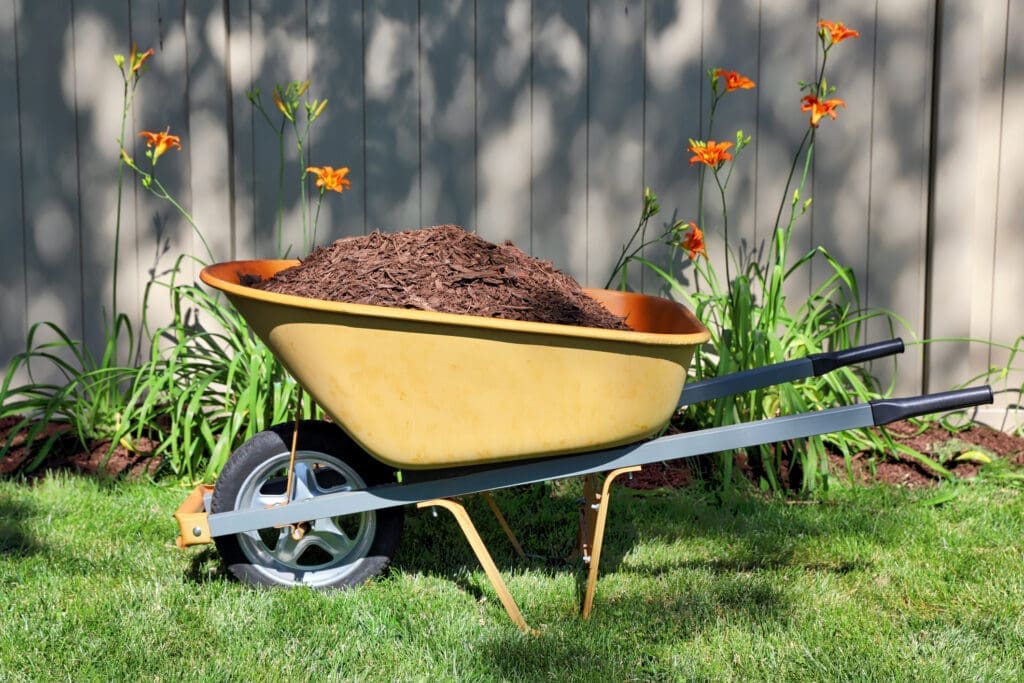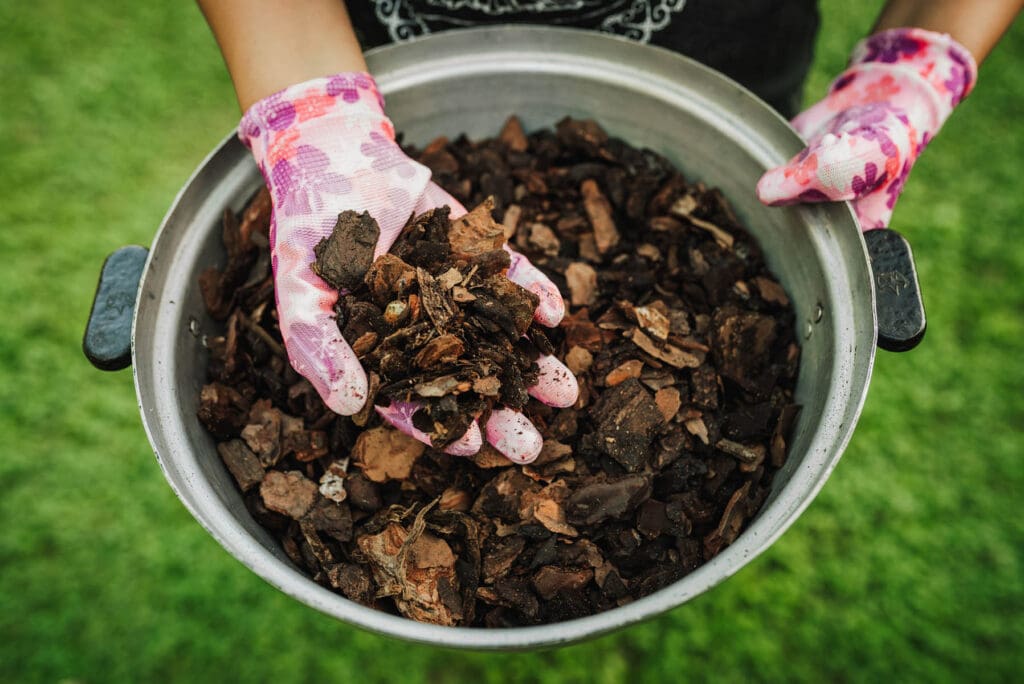Mulch can be an unsung garden hero. It helps soil retain moisture, regulates temperature, reduces weed and prevents erosion.
There is much to love about mulch. You can fill bare soil in garden beds with plants or leaf piles, but mulch provides a fresh look and a boost to soil health during the first several years of a new garden’s life. Try these tips for better results.
When to Mulch
Any time is fine, but the best times to mulch are early spring and late fall. In spring, mulch helps soil stay moist before the summer heat sets in and gives plants a head start against weeds. Mulch helps regulate soil temperature, keeping it cooler during the summer by absorbing the sun’s ultraviolet rays and converting them into less intense, long-wave rays. During the fall, mulch helps maintain soil temperature and protects roots as they transition into dormancy.
Choosing Mulch
Bark Mulch Readily available and long-lasting, bark mulch is ideal for trees and shrubs. Hardwood mulch tends to become alkaline, suitable for most plants that don’t require acidic soil. Avoid dyed or colored mulches, which may contain harmful chemicals, and rubber mulch, which offers no ecological benefits.
Pine Needles As Coastal Virginia was once covered in longleaf pine trees (Pinus palustris), pine needle mulch naturally helps retain moisture in sandy soils while allowing excellent drainage.
Wood Chips Similar to bark mulch but often longer lasting. Many bagged wood chips contain chemicals or artificial coloring, but arborists frequently provide untreated chips for free or minimal cost.
Landscape Fabric Landscape fabric may be sold as a weed-blocking miracle, but it quickly becomes a soil and maintenance nightmare. It prevents organic matter from enriching the soil and smothers soil life by reducing oxygen and water exchange. Over time, weeds grow on top and through it, creating a tangled mess.
Shredded Leaves & Leaf Mold Nutrient-rich and excellent for vegetable and flower beds, they break down quickly, improving soil texture and moisture retention. However, they can mat down if applied too thickly, reducing air circulation and water penetration. Shredding leaves before application or using a thin layer helps prevent this issue.
Pine Straw or Pine Chips Light and easy to spread, this is a good choice for coastal native plants that prefer acidic soil, like blueberries, rhododendrons, hollies, Northern bayberry and Coastal Plain serviceberry.
Straw Straw is useful in vegetable gardens but should be sourced carefully to avoid weed seeds. And double-check that you avoid livestock hay with crop seeds. Some vegetables, like garlic, tomatoes, strawberries and potatoes, thrive in straw mulch.
Compost While compost offers similar benefits to mulch like improving soil nutrients and suppressing weeds, compost is not to be confused with mulch. Excessive compost can disrupt soil nutrient balance, making plants weak, floppy, and susceptible to disease. Compost is best as a soil amendment, particularly for restoring degraded or compacted soils.
Gravel & Stone These are suitable for dry, arid landscapes where leaf litter is not a natural ecosystem function but not ideal for temperate regions like Coastal Virginia. Gravel does not improve soil health and can increase heat reflection. And, since weed seeds are typically spread by wind, they quickly settle in gravel, making it a challenge for weed suppression.
Recycle Yard Waste Thick layers of grass clippings can become a barrier that seals the soil’s surface and repels water. Instead, a simple dry mixture of leaves and grass clippings is a beneficial, easy and free option.

Pitfalls to Avoid When Mulching
While mulch provides many benefits, some organic mulches, shredded bark and particularly wood chips are essentially carbon bombs. When wood chips decompose, the microbes that break them down take nitrogen from the soil, temporarily reducing the available nitrogen for plants.
This brief exchange usually lasts a few months; some sensitive plants may turn yellowish to pale green. The microbial populations rebound as the mulch breaks down, and plants typically recover. Over time, the mulch will improve soil health as decomposition progresses.
Add about one-half pound of high-nitrogen fertilizer per 1,000-square-feet to balance nutrients when using wood chips. Or, stick to a thin layer of these mulches (two-inches or less) and avoid mixing them directly into the soil.
Avoid piling mulch directly against tree trunks or plant stems, which can trap moisture and lead to rot or disease. The infamous “mulch volcano” buries part of the tree’s stem and roots, increasing the likelihood of basal rot and even death. Instead, keep mulch away from the base of trees and shrubs and lay no more than 3 inches extending to the tree’s drip line.
How to Mulch Effectively
First, remove any existing weeds before mulching. Mulch prevents new weeds from growing but won’t kill most established weeds. Second, apply a one- to three-inch layer—too little won’t stop weeds, while too much can suffocate plant roots. Most gardeners mulch yearly, which is all most gardens will need.
Mulching is an easy and effective way to conserve water, reduce weeds, and improve soil quality. Whether preparing for summer droughts or protecting plants from winter cold, mulch is a simple tool that provides a fresh look and, when used correctly, improves plant growth and soil health in new gardens.























